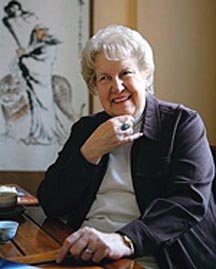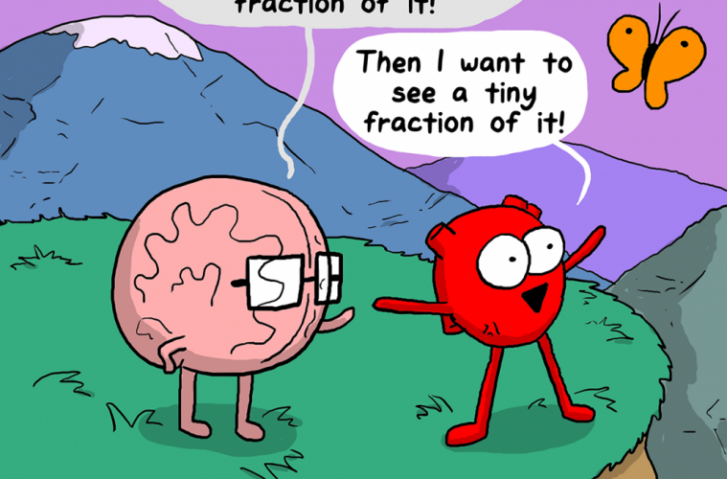Written by Doug Linman, PhD – NewEarth University Fellow and Faculty, School of Science & Design Innovation; and, Founder of Molecular Quartermasters Corporation
It has been well published by ancient wisdom keepers through current writers and scientists that we all have had some experience of a feeling, that comes over us occasionally, saying and doing what has been said and done before in a remote time, and of having been surrounded ages ago by the same faces, objects, and circumstances of our perfect recalling, what will be said next, as if suddenly remembered in vivid detail…..
Historically a Déjà Vu experience is like having a DVD or Jump Drive of “first’s” associated with the phenomenon, then compiled and tossed about in our mind with a few rumination and complex references from radio, books, magazines, the spoken word, sightseeings, sounds, colors, objects, photos and reflections all culminating into a massive inner library of preassembled or scattered knowledge.
There may very well be persons among us who hold a greater cognitive recollection of “first’s” moving backward as well as some, including extraordinary innovators, who experience future “first’s”. As scientists, we tend to spend more time in future understandings, so I have certainly had a few moments like this as well, especially before and after the death of my father when I was 15 years old. We were very close.
Like the force frequencies of Star Wars, as I was running downfield at HS football practice and my father was in a simple gall bladder operation that day, I stopped in my tracks needing to catch my breath from some overwhelming feeling at that instant that my father had died. Then I imagined a car immediately arriving to pick me up to take me to him! As I turned looking up the field bank, there was a car I had never seen before arriving with a dressed and recognizable surgeon stepping out to call me to him!
Instead, I started running up the bank and onto the street at full speed past him. I ran and ran until I stopped and sat down from exhaustion. The car had slowly followed me. A familiar family friend Doctor rolled down his window and said; “Doug we have to go now, I will tell you everything along the way!” The entire scenario was a future Deja Vu which played out exactly in that real life moment having never had any such reference to my father ever dying nor for any reason. My overwhelming feeling on the field was “exact” to his time of death!
Arriving at the hospital to see him first before my mother arrived, was strangely calming. I touched his hand and kissed his forehead and immediately felt guided and energized by him to take care of everything that remains. He was my mentor, I was the only son, my friend, my knowledge teacher, pianist and observation buddy, my dearest soul of a Father. As they say, a moment which outlasts all moments….
Reading a great deal and researching everywhere on this subject including neuroscience, psychiatry, psychology, religions, and consciousness arrived my personal view that while Deja Vecu expresses “already lived”, Deja Vu takes us into the “already seen” detail and by open scientific argument over decades, did become the most generally accepted word which, so far, best defines and describes such an experience at this time.
First’s Beginnings
Surprisingly, not much historical data nor any real interest in the phenomenon of deja vu was present and detailed enough until the early part of the 1800s. This might simply be that people had no deep understanding or discussed experiences of deja vu previously and that any witnessing of such matters in an argument was simply dismissed as a new element of human evolution and behavioral understanding.
On the other hand, it could have been far too troublesome for thinkers at that time to safely venture into observations and theories like this without dramatic repercussion from the religious community and church leadership. Also, it could have been too insignificant for a focused discussion when compared with other far more immediate issues of food, famine, dying and wars.
The earliest published medical-scientific type thinking on the topic of déjà vu is this referenced book by an English doctor, Sir Arthur L. Wigan circa 1844, entitled “The Duality of the Mind”. The story as written goes to say that in early 1817 he had attended the funeral of Princess Charlotte at Windsor. He had sustained little sleep the night before and had not eaten during the day preceding the midnight interment since all inns and eating establishments are closed during such royal mourning.
After four hours of standing in St George’s Chapel, he said he was near fainting. Suddenly, as the coffin was being lowered into its place of final rest, he “felt not merely an impression, but a conviction [his], that he, in fact, had seen the whole scene before on some former occasion, and had heard even the very words addressed to myself by Sir George Naylor”!
From his experience, as presented in his book, he derived a thesis that such experiences only occur when one is tired, so that one of the hemispheres of the brain is more or less inattentive to what is going on, or even asleep. Then something causes it to wake up, but it digests its information about the situation after the other, awake hemisphere has already acknowledged it. The time interval, he said, “may seem to have been many years” since we have nothing upon which to base our judgment of the elapsed time. As a medical Doctor, he was involved in constant discovery and hopeful processes which healed people. His writings and publications were of great value in the understanding of human behavior and its influences.
Is it the visions of our sleep that float in our memory? Are they recalled by the appearance of such real objects as in any respect corresponding to the phantoms they presented to our imagination? How often do we find ourselves in company which we have never met before, and yet feel impressed with a mysterious and ill-defined consciousness that neither the scene, the speakers nor the subject, are entirely new or feel as if we could anticipate that part of the conversation which has not yet taken place!”
Harvard Professor of Anatomy, Oliver Wendell Holmes published 1858 a collection of thoughts that he had contributed regularly to a local newspaper. As the story goes, this compilation, now published as a book, received the title, ‘The Autocrat of the Breakfast Table’. Reading his work you will find one of the Inn boarders saying, “All at once a conviction flashes through us that we have been in the same precise circumstances at that present instant, once or many times before”. Deja Vu? Could be, or could be simply a recollection of common everyday discussions.
Meanings of Things
At the turn of the century, there were many terms being used to designate this experience, in addition to “déjà vu” or “illusionary memory”. These inferences generally entered the scientific literature around 1876 when Emile Boirac a Professor of Philosophy at a classical high school in Poitiers, had published a letter in the Revue Philosophique in which he spoke of “le sentiment du déjà vu”.
He described his own experiences and classified them as one type of illusionary memory or dreams with follow up hallucinations. However, his use of the terminology was soon forgotten, when thirteen years later, Ludvioc Dugas (1894), in his paper on false memories and “depersonalization”, used the term “illusionary memory”, though he only used it along with several others.
It was then two years later in 1896 that the term “déjà vu” was officially proposed by F. L. Arnaud at a meeting of the Societe Medico-Psychologique to designate the phenomenon. He objected that the other terminologies such as false recognition, false memory, paramnesia and reminiscence, were too broad. He felt that “already seen” more nearly fitted the experience as it was encountered and represented a more neutral position from a theoretical point of view.
This suggestion was taken up by a number of writers, including Prof. Pierre Janet (1905), who had also been present at the meeting. It quickly became a popular reference because it was short and to the point. The term “Déjà vécu” designation describing “already lived”, as a number of authors have insisted in later years, would probably have been more accurate and a better choice, but it actually never gained wide acceptance.
Other terms persisted in the technical literature for a while, with “paramnesia” being the other most widely preferred, particularly in English-language publications. This term floated due to William Henry Burnham’s publication in The American Journal of Psychology Vol. 2, No. 1 (Nov., 1888) entitled ‘Memory, Historically and Experimentally Considered.. An Historical Sketch of the Older Conceptions of Memory’. In that writing “Paramnesia” it seems he devised to separate himself from others. Many wanted to take the credit for its etymology, and so there was a forward race on the proper word and its description and certainly who gets the credit!
Algorithmic Reincarnation
Deja Vu refers to those odd and usually rare moments when the present feels like the past. It’s a hard experience to interpret. Some people search their memories for dreams that might have been like the present. Others think that the experience is what happens when things from past lives emerge in this one. Both notions are impossible to prove, disprove, or (until recently), investigate. The belief that its about past lives is a matter of faith. The idea that it has to do with dreams is less a matter of faith – only a few people claim to recall past lives, but almost everybody remembers some of their dreams. Some recall a lot of them. The theory of reincarnation that is most consistent with modern brain science predicts that no memories are passed from one life to the next. What is transferred is a set of signals that reflect states of consciousness. Memories don’t need to go along. Memories are state-specific.
We can have experiences in one state of consciousness (example:when we are intoxicated) that we cannot remember at all when we are in another state, like high intense feelings when skydiving. States of consciousness provide a much more direct way for someone to select how they will behave than remembering past behaviors and comparing them to present possibilities.
There is a problem with dreams as well. Both dreams and deja vu experiences happen in non-normal states of consciousness. Most altered states are extrasensory perception as a faculty of perceiving things by means other than the known senses, e.g., by telepathy or clairvoyance. This is fertile ground for confabulations (“embroidered” or false memories). This means that in the moment when someone is experiencing deja vu, it’s easier for them to create a false memory than it would be normally. In fact, during moments of deja vu , one’s consciousness has unusually direct access to long-term memories, and the brain processes that need to allow us to retrieve them.
There are some people who experience precognitive dreams, but most episodes of deja vu happen without the person having any sense of it relating to a dream. Precognitive dreams are a different matter altogether. Having the present moment feel like a repeat of something from the past is not the same as having the present validate a previous precognition.
My Amygdala Your Amygdala
The scientific explanation is that it has to do with memory processes. In general, the frontal lobes are concerned with the future, the temporal lobes are concerned with the past, and the underlying, intermediate portions (the limbic system) are concerned with the present. When these are all doing their normal thing, in normal states of consciousness, the feeling that something is going to happen will only come up when we are thinking about the future, worrying about it, anticipating it or making plans for it. The sense of the past will only come up when our memories have been triggered in some way. So these are the two general rules of engagement about the future anticipation and the past.
The structure that overwhelms our consciousness when we are ‘in the present or ‘being here now’ is the amygdala. There are two amygdalae (or almond sized masses), one situated in each brain hemisphere. The amygdala is a limbic system structure that is involved in our emotions and motivations, particularly those that are related to survival. It is involved in the processing of emotions such as fear, anger, and pleasure.
When you step into the street and see a car speeding towards you, and you instantly freeze in terror and jump out of the way, that terror realization is the amygdala at work. The amygdala also recognizes expressions and meanings on people’s faces. When we are speaking to someone, we can recognize their expressions and responses which might change the way we continue to speak to them just as quickly as we recognize danger. Words can often conjure up danger to the one hearing them. “we’re thinking of letting you go.” “I’ve been thinking that our relationship is holding me back.” “You are under arrest.” Phrases like these need instant, appropriate responses, and the amygdala is specialized to provide them.
If perceptions from the present are shunted through the parts of the brain that process memories from the past, those perceptions will feel like they are memories, and the person will feel that they are re-living a moment stored in long-term memory.
Do you Deja Vu?
That should depend on whether you enjoy it or not. Some people are just terrified when it happens. Others find it mildly euphoric. As with all other altered state experiences, most people who enjoy it think of the experience in spiritual terms, and those who don’t, think about it in psychological terms. There is nothing frightening about deja vu in itself, but it can happen that activity from the hippocampus can spill over into the neighboring structure, the amygdala, which is a highly emotional structure. If it gets into the one at the right moment, the emotion is going to be unpleasant, most likely fearful. In my Father’s death example, at first I feared when the feeling of his death arrived, which quickly turned into flight towards him to halt it if I could, then once arriving at the hospital it turned into calming my Mother and sisters.
When deja vu feels good, a person will respond differently. There’s no need to seek a professional diagnosis or concern. In that case, it really can’t be called any disorder, but people still feel that it somehow calls for a response, and it will ‘feel’ like a spiritual one which will be most appropriate. For deja vu that feels spiritual, the common response suggestion is meditation.
The kind that emphasizes being present in the here and now, that Deja vu is an alteration in the perception of the present moment. The two best-known methods of altering the perception of the present moment are Zen and Vipassana, both Indian Buddhist practices. There are times that Jesus might have also been close to these practices when he said to ‘be still and know”.
The more often Deja vu happens, the more likely a person will be able to stop their ongoing mental processes, and just be in the present. Sort of like being a padawan to a Jedi Master, understanding and reacting to the force that surrounds and binds everything. Deja vu is an experience that won’t easily translate into words when it’s happening to a person, who can still speak, but the phenomena will demand massive brain attention and processing to a ready state of response.
Deja Vu Time?
Deja vu involves the ‘sense’ of present and past. Thus the phenomena of time must be completely unrelated, in spite of the connection we feel between them. The reason being is that understanding one offers no clues to the other. Deja vu is mostly ‘about’ the past. There is a related phenomena – ‘future memory’, whose existence offers the possibility that deja vu and ‘future memory’ offer two different ends of a single spectrum. While inconclusive, we might have altered perception in two directions – past and future.
Any skeptical scientist would deny the existence of future memory, and there exists no evidence that can prove them wrong…or right! Possibly as well, that the element of time at that instance, holds no meaning in a neural phenomena sense. It may also be that there are two mechanisms – one behind deja vu ‘to’ actual events, and one that spins out (confabulates) memories to which the deja vu seems to refer and thus arrives to a sort of time reference. For the mind to create a memory, right in the moment, that matches the present is a small thing next to the entire worlds it can create in dreams, visions, and near-death experiences.
Future Memory
“Time and space are modes by which we think… they are not conditions in which we live…”
Albert Einstein
As assembled and presented here, a truly creative mind can create and remember a future. A book by the same title has been written by a most extraordinary woman, P. M. H. Atwater. She is a North American writer and researcher on subjects related to Idaho, life and death issues, and spirituality from a new thought point of view. She has experienced future memory all of her life. She also provides all of the relevant science behind this phenomena in a very readable and understandable format.
Einstein, Bohm, Hawking and other noted physicists, as well as Penrose, Bentov and others on the leading edge of mathematics and cosmology are documented as accepting and promoting this theory of Future Memory. Their ideas and discoveries are simplified and connected in a very unique way expressing the probability that there is an acceptance of Future Memory.
As written on the inside cover, Ms. Atwater does a superb job of using simple images and simple language to explain complicated physical and mathematical concepts. She also integrates this with the work of leading philosophers, psychologists, neurophysiologists, and biologists. This work is so comprehensive you will realize no stone was left unturned in revealing the simplicity of how future memory is possible.
She also gives a thrilling and spell-binding rendition of her own three near-death experiences. What she learned about the intricacies of creation dovetails perfectly with what science has discovered in quantum theory. To remember the future you need to reorient your relationship to how you experience ‘time’. Though the concept of memory is usually applied to the past it can also be applied to experiencing the future before it has occurred. Linear time is not as real as it may appear. As Einstein implies, linear time is a concept we have accepted, yet it is a relative experience, not a consistent reality.
Ancient Greeks considered learning to be remembering. The word education originally meant to draw from that which was already known. To educate yourself was to remember what your soul already knew, not to gain anything new.
It is our perception of reality that determines what we experience. There is no ‘objective’ reality apart and separate from us. We are all experiencing this ‘reality’ in our own unique way. Though we have a general consensus on many things, none of us sees, hears or feels identically with another. We are all connected to a web of consciousness and energy that is pliable, fluid and amenable to our individual will. It is our consensus of reality that allows us to interact and agree on many things, but in truth we each experience uniquely. This is what gives us our creative abilities and something that we should cherish and augment, not attempt to hide or diminish in fear of public ridicule.
Atwater fairly sums up the essentials of learning to remember the future with the following quote, “The true art of memory is the art of attention (directing the mind) and intention (exerting the mind).” Attention is the key to concentrating and focusing your mind to a particular place or time. Intention is the act of willing yourself to participate in whatever you are focused upon. Being mindful of these two key elements in your everyday life will measurably enhance not only your creativity but your ability to experience greater realities..
Deja Vu can then have two poles of reference. One in the past and one in the future, with the recollection instant as the phenomenon that distinguishes the differences.
Could there also exist a blending of this? I would think so, as it happened to me! I first felt an immediate overwhelming demonstrative feeling that froze me, then another instant photo flash of a slow traveling car which I have never seen before, then an assembled probable death scenario with some related hospital audio, then I turn to actually visually see the approaching slow traveling car, with a Surgeon doctor stepping out waving and calling my name for me to come now. The Deja Vu of past and future conditions and the phenomenon which distinguished them presented my experience of the instant that First’s repeat themselves…..









